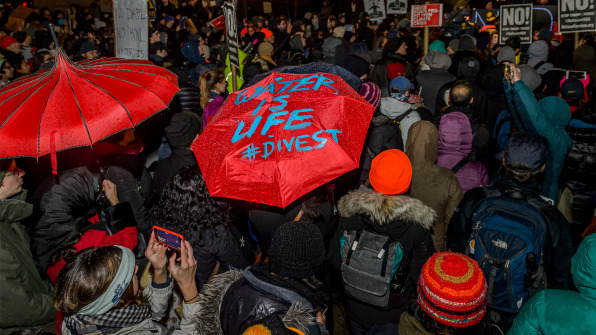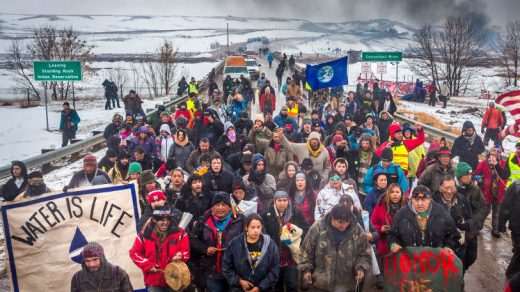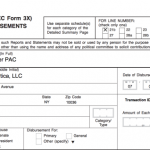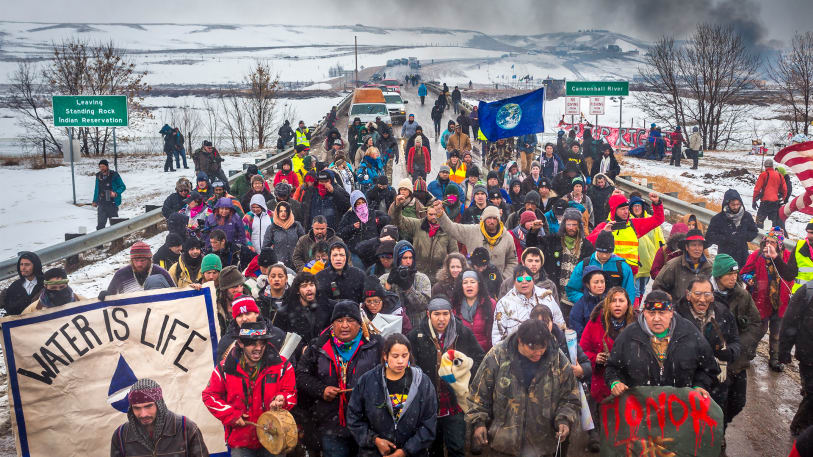Even If The Keystone Pipeline Is Approved, There May Not Be Enough Demand To Build It
On January 24, his fourth day in office, Trump tried to resurrect the Keystone XL Pipeline. He invited TransCanada, the company behind the pipeline, to reapply for a presidential permit that the Obama administration had rejected in 2015. Two days later, TransCanada filed the application. On March 24, it announced that the pipeline had been reapproved. But that doesn’t necessarily mean that the pipeline is guaranteed to be built.
The pipeline, which inspired massive protests when it was first under consideration, would stretch 1,179 miles from Hardisty, Alberta, to Steele City, Nebraska, and then, after another phase of the project is complete, to the Gulf Coast in Texas and Louisiana. It’s designed to move more than 800,000 barrels of crude a day from Canadian bitumen fields (also known as tar sands; the industry prefers “oil sands”) to American refineries.

But the demand for shipping that oil has been dropping. “The larger picture for tar sands oil, in general, has shifted dramatically from when the Keystone project was first proposed,” says Adam Scott, a Toronto-based senior campaigner for the advocacy group Oil Change International.
“When it was first envisioned, the industry was riding high, oil prices were high, and companies from around the world were investing billions in planned expansions of new projects in the tar sands,” he says. “They were talking about increasing production continuously by millions of barrels a day for the coming decade. That’s completely changed in just the last two or three years with the oil price crash.”
Shell is selling off almost all of its tar sands assets, after announcing in February that it wouldn’t take on any new oil sands projects. ExxonMobil wrote off the 3.5 billion barrels of tar sands oil that it has in reserves in one Canadian project because the reserves are no longer economical to extract. ConocoPhillips cut reserves by 1.2 billion barrels. Norway’s Statoil sold off its tar sands reserves at a loss in December 2016. France’s Total sold off some of its holdings in 2015.
“I think you’re going to see more and more companies do what Exxon did, write it off, try to get it off their balance sheets, get it off their books,” says Andy Behar, CEO of As You Sow, a nonprofit that promotes corporate responsibility. “It’s so expensive and takes so much energy to extract those barrels of oil.”
Though bitumen production on existing sites is profitable, the cost to produce crude from a new mine can be as much as $80 a barrel. The World Energy Outlook estimates that prices won’t return to $80 a barrel until 2020 under any scenario.

“If they’re not extracting the tar sands, they don’t have any need to transport it,” says Behar. “We just see that the most expensive projects are the ones that are going to get de-sanctioned first. Tar sands is at the top of the list.”
On a recent earnings call, the CEO of Enbridge–a pipeline company working on the equally controversial and Trump-expedited Dakota Access Pipeline–stated that Canada only has a need for two new export pipelines to meet demand. But there are four new pipeline projects being discussed: Keystone, Kinder Morgan’s controversial Trans Mountain pipeline that would travel to the Vancouver area, and Enbridge’s new Line 3 pipeline that would travel to Wisconsin, which were both approved by the Canadian federal government in 2016. TransCanada has also proposed its Energy East pipeline, which would go to New Brunswick.
Oil companies in Alberta also now have to pay a new carbon tax that went into effect in January, and which will go up to $30 per ton of carbon dioxide in 2018. The province has also proposed a cap on emissions from the sector of 100 megatons per year; without improvements in technology, this would slow or stop growth.
Not only are production forecasts lower now than they were when the project began, oil companies and shipping companies may also be wary of the border tax that Trump has threatened on imports from Canada. Both factors may make oil shippers a little less likely to want to commit to a long-term agreement. “We don’t know what’s going on behind closed doors, but it would be difficult for them to get the same level of shipper interest that they did, and they have to have that secured,” Scott says.
All of this could potentially make it a little more challenging for TransCanada to get shippers to sign long-term contracts to use the pipeline, although the company says that it continues to have shipper support, it wouldn’t confirm it has signed contracts. “Typically . . . they pre-arrange with a number of shippers . . . so they have to have to bid on space and commit to using it,” says Scott. “Whether they use it or not, they pay. When the project was canceled, all of that work that they did to secure shippers went in the garbage. So they’re in the process now of renegotiating with the original shippers.”

On the other hand, the Keystone XL pipeline would still be a cheaper way for producers to get crude to refineries in the Gulf Coast than the trucks or trains that are currently used, and companies that already have sunk large capital costs into their tar sand operations are likely to want to keep moving forward–especially if they believe that oil prices will eventually bounce back to the levels seen when Keystone was first proposed.
“Oil sands projects are unique in nature because the project developers and operators also have to have that long-term vision; oil sands projects operate anywhere from 25-40 years,” says Dinara Millington, vice president of research for the Canadian Research Energy Institute, a nonprofit based in Alberta (among others, the Canadian Association of Petroleum Producers is one of the organization’s funders).
“I think in that sense, there’s still a lot of interest between the oil sands project owners and the TransCanada Keystone XL to build that connectivity to gain access to the Gulf of Mexico refining market,” she says.
Of the fact that companies like Statoil and Shell have pulled out of the oil sands, Millington says, “Whether that is an indication of a dire future for the oil sands industry, it’s too early to tell, in my opinion.” She suggests that the industry may see more mergers and acquisitions–but the players who are left will still want a cheap way to move crude such as Keystone XL.
Behar, whose nonprofit predicted the coal industry collapse before the industry believed it was possible, thinks that the oil industry is mistaken about future growth. “As much as these companies keep insisting that they’re going to be around in 10 and 20 years, I just don’t see the actual math,” he says.
“If they were able to secure deals with shippers, I would expect those contracts to have worse terms for TransCanada than they might have in the original application,” says Scott. “With lower projected production volumes comes less competition for pipeline space.”
If TransCanada does sign up enough customers to move forward, it will also have to deal with securing land. In 2015, before Obama denied the project a permit, the company filed for eminent domain to take ownership of land on Nebraska farms whose owners refused to sell their property. In response, the landowners sued. Months later, the company withdrew its claim.
Now that Keystone is in progress again, TransCanada will again try to get eminent domain (under Nebraska law, that process can’t begin until September), but the same group of landowners plans to continue to resist. The company also has to apply for a permit from the state Public Service Commission. “Our focal point right now is the Public Service Commission in Nebraska,” says Linda Anderson, state director of Bold Nebraska, an organization that worked with farmers, ranchers, tribes, and citizens to fight Keystone XL the first time around. “It’s really our best bet to shut this down.”
For now, TransCanada will keep fighting for the project. In a lawsuit against the U.S. after the permit was denied, the company said that it had already sunk $3 billion into the pipeline. But without enough buy-in from the oil industry, it might be forced to walk away.
Fast Company , Read Full Story
(82)














